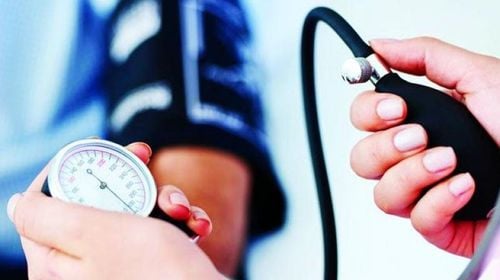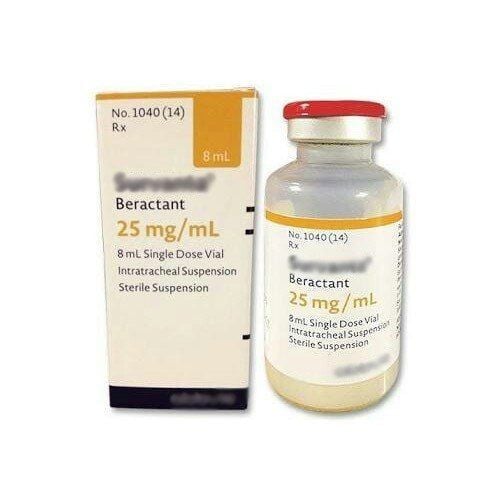This is an automatically translated article.
Swallowing disorders can occur at any age, from very young children to the elderly. This disease not only makes it difficult to eat and drink every day, but it can also cause dangerous complications for patients such as aspiration, difficulty breathing, pneumonia, and even death. The following article will help readers better understand swallowing disorders as well as evaluate swallowing disorders.1. What is a swallowing disorder?
Swallowing disorder, also known as dysphagia, is a condition in which the stages of eating and swallowing, including from the mouth, pharynx, to the esophagus, are impaired, the disorder makes the patient spend a lot of time and effort to push food or drink. liquid from the mouth down to the stomach. The process of swallowing and breathing occurs together in the pharynx, so when either of these processes has problems, or there is a lack of synchronization of swallowing and breathing, it can affect the patient's ability to protect the respiratory tract. when swallowing and eating liquids.2. Why is it difficult to swallow?
Swallowing disorder is not called a disease, but this is a secondary consequence of the patient suffering from diseases of neurological origin, in adults such as stroke, brain stroke, cancer, psychology, etc. After surgery, young children are congenital or due to treatment.For people who have had a stroke, according to statistics, about 30%-70% of people have swallowing disorders, damage to the posterior circulatory system. When a brain stroke will cause damage to the brain stem, the pharyngeal muscles will be paralyzed, causing swallowing disorders, even swallowing saliva is difficult.
With young children, infants: Children may have swallowing disorders due to:
Children with cerebral palsy, acquired brain damage/trauma, other neuromuscular disorders Children with craniofacial malformations, malformations airways Congenital heart disease , digestive problems , eating injuries Cleft lips or cleft palate Babies born prematurely , born with low birth weight are also at risk for dysphagia.

Trẻ sinh non có nguy cơ mắc chứng khó nuốt, rối loạn nuốt
3. Signs of a swallowing disorder
In addition to the symptoms that the patient eats or drops food, drinks water is out, frequent salivation, a lot of saliva in the mouth, signs and behavior of eating or drinking in patients with swallowing disorder can be is divided into 3 main stages:Oral stage Retained food in the mouth Drooling while eating Food spilled out of the mouth Reflux in the mouth or nose Oropharyngeal stage Drooling, difficulty initiating swallowing Oral regurgitation, regurgitation at the beginning of swallowing, delay in swallowing food Coughing or choking during swallowing Changes in voice or speed of speech after swallowing Throat discomfort cough Unexplained weight loss. Esophageal phase: Drooling Feeling of food remaining in the neck, chest Pneumonia Unexplained weight loss Change in eating habits
4. Is swallowing disorder dangerous?
Swallowing disorders can cause complications for the patient:Have breathing problems. When food enters the respiratory tract, if the person tries to swallow it, it will cause respiratory problems or infection, if this condition persists, it will cause pneumonia or upper respiratory infection. The study showed that patients with multi-organ disease diagnoses, besides dysphagia, were at greatest risk of developing pneumonia. Dehydration Death
5. Evaluation of swallowing disorder
Any degree of swallowing disorder is worrisome, but the following signs and symptoms are more dangerous:Patient has symptoms of complete obstruction including: Sputum retention drooling in the mouth, neck when eating, inability to swallow anything. Difficulty swallowing, inability to absorb nutrients leading to weight loss Newly established focal nerve damage causing muscle weakness Due to dangerous and potentially life-threatening complications of swallowing disorder, when If the patient is suspected of having a swallowing disorder after a stroke, the family member should soon take the patient to a medical facility for timely examination and treatment.
6. Detecting and treating brain disorders
Brain Disorders Detection Television-enhanced X-ray (VFSS) and flexible endoscopic swallowing assessment (FEES) are the most common assessment tools used to detect swallowing disorders.VFSS allows assessment of all stages of swallowing. In this study, patients were administered barium-containing liquids and foods, and endoscopic video surveillance was used to document pharyngeal swallowing function and swallowing disorders. FEES test: This test does not require the child to drink barium or be exposed to radiation, but the child will need a nasal endoscopy. FEES provides images of the larynx and hypopharynx before and after (but not during) pharyngeal swallowing, helping to detect structural and physiological defects in swallowing, as well as assess the risk of aspiration. . FEES is a safe and effective tool for assessing dysphagia even in children and also allows assessment of pharyngeal sensation. Treatment Invasive procedure when the patient cannot eat by mouth:
Enteral feeding Method Oral-to-stomach tube Nasal-to-stomach tube Endoscopic gastrostomy Percutaneous jejunostomy Endoscopy Complete parenteral nutrition Drug therapy Giving the patient atropine to reduce salivation but making it more difficult for the patient to swallow.
Rehabilitation exercises Patients with swallowing disorders can use exercises to restore swallowing function such as:
Change position during swallowing: Bend the chin before swallowing in the head position about approx. 30-45 degrees, turn the head to the weak side when swallowing, tilt the head to the strong side. Exercises to increase sensory awareness: Exercises to move the tongue, practice pronunciation to increase the strength of the muscles of the lips and tongue. Exercises to swallow forcefully, practice pushing jaws, practice swallowing, stimulate swallowing, practice groups of muscles to support swallowing ... help to clean the throat and reduce the backlog of food and saliva in the mouth. Promotes the perception of taste:
Thermal tactile stimulation Eat sour foods Eat textured foods Eat cold foods. Carbonated food

Người bệnh rối loạn nuốt có thể được kê thuốc để giảm triệu chứng chảy nước bọt
7. Attention to care for patients with swallowing disorders
Offer the patient foods that have been cooked soft, mushy, chopped, or pureed if chewing or swallowing is difficult.Avoid giving hard, dry, large foods
Feed with a spoon, 1 small piece at a time, eat slowly
The patient eats in an upright sitting position, perpendicular to the hips, knees and feet touching floor, do not let your feet hang.
If the patient is lying down, adjust the head of the bed so that the patient's head is elevated. After eating, the patient should sit or walk for 30 minutes to avoid food reflux.
Vinmec International General Hospital is one of the hospitals that not only ensures professional quality with a team of doctors, modern equipment and technology, but also stands out for its examination, consulting and service services. comprehensive and professional medical treatment; civilized, polite, safe and sterile medical examination and treatment space.
Please dial HOTLINE for more information or register for an appointment HERE. Download MyVinmec app to make appointments faster and to manage your bookings easily.
Reference source: familyhospital.vn












